To the Shareholders of Berkshire Hathaway Inc.:
Our gain in net worth during 1994 was $1.45 billion or 13.9%.
Over the last 30 years (that is, since present management took
over) our per-share book value has grown from $19 to $10,083, or
at a rate of 23% compounded annually.
Charlie Munger, Berkshire's Vice Chairman and my partner,
and I make few predictions. One we will confidently offer,
however, is that the future performance of Berkshire won't come
close to matching the performance of the past.
The problem is not that what has worked in the past will
cease to work in the future. To the contrary, we believe that
our formula - the purchase at sensible prices of businesses that
have good underlying economics and are run by honest and able
people - is certain to produce reasonable success. We expect,
therefore, to keep on doing well.
A fat wallet, however, is the enemy of superior investment
results. And Berkshire now has a net worth of $11.9 billion
compared to about $22 million when Charlie and I began to manage
the company. Though there are as many good businesses as ever,
it is useless for us to make purchases that are inconsequential
in relation to Berkshire's capital. (As Charlie regularly
reminds me, "If something is not worth doing at all, it's not
worth doing well.") We now consider a security for purchase only
if we believe we can deploy at least $100 million in it. Given
that minimum, Berkshire's investment universe has shrunk
dramatically.
Nevertheless, we will stick with the approach that got us
here and try not to relax our standards. Ted Williams, in
The Story of My Life, explains why: "My argument is, to be
a good hitter, you've got to get a good ball to hit. It's the
first rule in the book. If I have to bite at stuff that is out
of my happy zone, I'm not a .344 hitter. I might only be a .250
hitter." Charlie and I agree and will try to wait for
opportunities that are well within our own "happy zone."
We will continue to ignore political and economic forecasts,
which are an expensive distraction for many investors and
businessmen. Thirty years ago, no one could have foreseen the
huge expansion of the Vietnam War, wage and price controls, two
oil shocks, the resignation of a president, the dissolution of
the Soviet Union, a one-day drop in the Dow of 508 points, or
treasury bill yields fluctuating between 2.8% and 17.4%.
But, surprise - none of these blockbuster events made the
slightest dent in Ben Graham's investment principles. Nor did
they render unsound the negotiated purchases of fine businesses
at sensible prices. Imagine the cost to us, then, if we had let
a fear of unknowns cause us to defer or alter the deployment of
capital. Indeed, we have usually made our best purchases when
apprehensions about some macro event were at a peak. Fear is the
foe of the faddist, but the friend of the fundamentalist.
A different set of major shocks is sure to occur in the next
30 years. We will neither try to predict these nor to profit
from them. If we can identify businesses similar to those we
have purchased in the past, external surprises will have little
effect on our long-term results.
B
E
R
K
S
H
I
R
E
H
A
T
H
A
W
A
Y
I
N
C
.
�
What we promise you - along with more modest gains - is that
during your ownership of Berkshire, you will fare just as Charlie
and I do. If you suffer, we will suffer; if we prosper, so will
you. And we will not break this bond by introducing compensation
arrangements that give us a greater participation in the upside
than the downside.
We further promise you that our personal fortunes will
remain overwhelmingly concentrated in Berkshire shares: We will
not ask you to invest with us and then put our own money
elsewhere. In addition, Berkshire dominates both the investment
portfolios of most members of our families and of a great many
friends who belonged to partnerships that Charlie and I ran in
the 1960's. We could not be more motivated to do our best.
Luckily, we have a good base from which to work. Ten years
ago, in 1984, Berkshire's insurance companies held securities
having a value of $1.7 billion, or about $1,500 per Berkshire
share. Leaving aside all income and capital gains from those
securities, Berkshire's pre-tax earnings that year were only
about $6 million. We had earnings, yes, from our various
manufacturing, retailing and service businesses, but they were
almost entirely offset by the combination of underwriting losses
in our insurance business, corporate overhead and interest
expense.
Now we hold securities worth $18 billion, or over $15,000
per Berkshire share. If you again exclude all income from these
securities, our pre-tax earnings in 1994 were about $384 million.
During the decade, employment has grown from 5,000 to 22,000
(including eleven people at World Headquarters).
We achieved our gains through the efforts of a superb corps
of operating managers who get extraordinary results from some
ordinary-appearing businesses. Casey Stengel described managing
a baseball team as "getting paid for home runs other fellows
hit." That's my formula at Berkshire, also.
The businesses in which we have partial interests are
equally important to Berkshire's success. A few statistics will
illustrate their significance: In 1994, Coca-Cola sold about 280
billion 8-ounce servings and earned a little less than a penny on
each. But pennies add up. Through Berkshire's 7.8% ownership of
Coke, we have an economic interest in 21 billion of its servings,
which produce "soft-drink earnings" for us of nearly $200
million. Similarly, by way of its Gillette stock, Berkshire has
a 7% share of the world's razor and blade market (measured by
revenues, not by units), a proportion according us about $250
million of sales in 1994. And, at Wells Fargo, a $53 billion
bank, our 13% ownership translates into a $7 billion "Berkshire
Bank" that earned about $100 million during 1994.
It's far better to own a significant portion of the Hope
diamond than 100% of a rhinestone, and the companies just
mentioned easily qualify as rare gems. Best of all, we aren't
limited to simply a few of this breed, but instead possess a
growing collection.
Stock prices will continue to fluctuate - sometimes sharply
- and the economy will have its ups and down. Over time,
however, we believe it highly probable that the sort of
businesses we own will continue to increase in value at a
satisfactory rate.
Book Value and Intrinsic Value
We regularly report our per-share book value, an easily
calculable number, though one of limited use. Just as regularly,
�
we tell you that what counts is intrinsic value, a number that is
impossible to pinpoint but essential to estimate.
For example, in 1964, we could state with certitude that
Berkshire's per-share book value was $19.46. However, that
figure considerably overstated the stock's intrinsic value since
all of the company's resources were tied up in a sub-profitable
textile business. Our textile assets had neither going-concern
nor liquidation values equal to their carrying values. In 1964,
then, anyone inquiring into the soundness of Berkshire's balance
sheet might well have deserved the answer once offered up by a
Hollywood mogul of dubious reputation: "Don't worry, the
liabilities are solid."
Today, Berkshire's situation has reversed: Many of the
businesses we control are worth far more than their carrying
value. (Those we don't control, such as Coca-Cola or Gillette,
are carried at current market values.) We continue to give you
book value figures, however, because they serve as a rough,
albeit significantly understated, tracking measure for Berkshire's
intrinsic value. Last year, in fact, the two measures moved in
concert: Book value gained 13.9%, and that was the approximate
gain in intrinsic value also.
We define intrinsic value as the discounted value of the
cash that can be taken out of a business during its remaining
life. Anyone calculating intrinsic value necessarily comes up
with a highly subjective figure that will change both as
estimates of future cash flows are revised and as interest rates
move. Despite its fuzziness, however, intrinsic value is all-
important and is the only logical way to evaluate the relative
attractiveness of investments and businesses.
To see how historical input (book value) and future output
(intrinsic value) can diverge, let's look at another form of
investment, a college education. Think of the education's cost
as its "book value." If it is to be accurate, the cost should
include the earnings that were foregone by the student because he
chose college rather than a job.
For this exercise, we will ignore the important non-economic
benefits of an education and focus strictly on its economic
value. First, we must estimate the earnings that the graduate
will receive over his lifetime and subtract from that figure an
estimate of what he would have earned had he lacked his
education. That gives us an excess earnings figure, which must
then be discounted, at an appropriate interest rate, back to
graduation day. The dollar result equals the intrinsic economic
value of the education.
Some graduates will find that the book value of their
education exceeds its intrinsic value, which means that whoever
paid for the education didn't get his money's worth. In other
cases, the intrinsic value of an education will far exceed its
book value, a result that proves capital was wisely deployed. In
all cases, what is clear is that book value is meaningless as an
indicator of intrinsic value.
Now let's get less academic and look at Scott Fetzer, an
example from Berkshire's own experience. This account will not
only illustrate how the relationship of book value and intrinsic
value can change but also will provide an accounting lesson that
I know you have been breathlessly awaiting. Naturally, I've
chosen here to talk about an acquisition that has turned out to
be a huge winner.
Berkshire purchased Scott Fetzer at the beginning of 1986.
At the time, the company was a collection of 22 businesses, and
today we have exactly the same line-up - no additions and no
�
disposals. Scott Fetzer's main operations are World Book, Kirby,
and Campbell Hausfeld, but many other units are important
contributors to earnings as well.
We paid $315.2 million for Scott Fetzer, which at the time
had $172.6 million of book value. The $142.6 million premium we
handed over indicated our belief that the company's intrinsic
value was close to double its book value.
In the table below we trace the book value of Scott Fetzer,
as well as its earnings and dividends, since our purchase.
(1) (4)
Beginning (2) (3) Ending
Year Book Value Earnings Dividends Book Value
---- ---------- -------- --------- ----------
(In $ Millions) (1)+(2)-(3)
1986 ............... $172.6 $ 40.3 $125.0 $ 87.9
1987 ............... 87.9 48.6 41.0 95.5
1988 ............... 95.5 58.0 35.0 118.6
1989 ............... 118.6 58.5 71.5 105.5
1990 ............... 105.5 61.3 33.5 133.3
1991 ............... 133.3 61.4 74.0 120.7
1992 ............... 120.7 70.5 80.0 111.2
1993 ............... 111.2 77.5 98.0 90.7
1994 ............... 90.7 79.3 76.0 94.0
Because it had excess cash when our deal was made, Scott
Fetzer was able to pay Berkshire dividends of $125 million in
1986, though it earned only $40.3 million. I should mention that
we have not introduced leverage into Scott Fetzer's balance
sheet. In fact, the company has gone from very modest debt when
we purchased it to virtually no debt at all (except for debt used
by its finance subsidiary). Similarly, we have not sold plants
and leased them back, nor sold receivables, nor the like.
Throughout our years of ownership, Scott Fetzer has operated as a
conservatively-financed and liquid enterprise.
As you can see, Scott Fetzer's earnings have increased
steadily since we bought it, but book value has not grown
commensurately. Consequently, return on equity, which was
exceptional at the time of our purchase, has now become truly
extraordinary. Just how extraordinary is illustrated by
comparing Scott Fetzer's performance to that of the Fortune 500,
a group it would qualify for if it were a stand-alone company.
Had Scott Fetzer been on the 1993 500 list - the latest
available for inspection - the company's return on equity would
have ranked 4th. But that is far from the whole story. The top
three companies in return on equity were Insilco, LTV and Gaylord
Container, each of which emerged from bankruptcy in 1993 and none
of which achieved meaningful earnings that year except for those
they realized when they were accorded debt forgiveness in
bankruptcy proceedings. Leaving aside such non-operating
windfalls, Scott Fetzer's return on equity would have ranked it
first on the Fortune 500, well ahead of number two. Indeed,
Scott Fetzer's return on equity was double that of the company
ranking tenth.
You might expect that Scott Fetzer's success could only be
explained by a cyclical peak in earnings, a monopolistic
position, or leverage. But no such circumstances apply. Rather,
the company's success comes from the managerial expertise of CEO
Ralph Schey, of whom I'll tell you more later.
First, however, the promised accounting lesson: When we
paid a $142.6 million premium over book value for Scott Fetzer,
�
that figure had to be recorded on Berkshire's balance sheet.
I'll spare you the details of how this worked (these were laid
out in an appendix to our 1986 Annual Report) and get to the
bottom line: After a premium is initially recorded, it must in
almost all cases be written off over time through annual charges
that are shown as costs in the acquiring company's earnings
statement.
The following table shows, first, the annual charges
Berkshire has made to gradually extinguish the Scott Fetzer
acquisition premium and, second, the premium that remains on our
books. These charges have no effect on cash or the taxes we pay,
and are not, in our view, an economic cost (though many
accountants would disagree with us). They are merely a way for
us to reduce the carrying value of Scott Fetzer on our books so
that the figure will eventually match the net worth that Scott
Fetzer actually employs in its business.
Beginning Purchase-Premium Ending
Purchase Charge to Purchase
Year Premium Berkshire Earnings Premium
---- --------- ------------------ --------
(In $ Millions)
1986 ................ $142.6 $ 11.6 $131.0
1987 ................ 131.0 7.1 123.9
1988 ................ 123.9 7.9 115.9
1989 ................ 115.9 7.0 108.9
1990 ................ 108.9 7.1 101.9
1991 ................ 101.9 6.9 95.0
1992 ................ 95.0 7.7 87.2
1993 ................ 87.2 28.1 59.1
1994 ................ 59.1 4.9 54.2
Note that by the end of 1994 the premium was reduced to
$54.2 million. When this figure is added to Scott Fetzer's year-
end book value of $94 million, the total is $148.2 million, which
is the current carrying value of Scott Fetzer on Berkshire's
books. That amount is less than half of our carrying value for
the company when it was acquired. Yet Scott Fetzer is now
earning about twice what it then did. Clearly, the intrinsic
value of the business has consistently grown, even though we have
just as consistently marked down its carrying value through
purchase-premium charges that reduced Berkshire's earnings and
net worth.
The difference between Scott Fetzer's intrinsic value and
its carrying value on Berkshire's books is now huge. As I
mentioned earlier - but am delighted to mention again - credit
for this agreeable mismatch goes to Ralph Schey, a focused, smart
and high-grade manager.
The reasons for Ralph's success are not complicated. Ben
Graham taught me 45 years ago that in investing it is not
necessary to do extraordinary things to get extraordinary
results. In later life, I have been surprised to find that this
statement holds true in business management as well. What a
manager must do is handle the basics well and not get diverted.
That's precisely Ralph's formula. He establishes the right goals
and never forgets what he set out to do. On the personal side,
Ralph is a joy to work with. He's forthright about problems and
is self-confident without being self-important.
He is also experienced. Though I don't know Ralph's age, I
do know that, like many of our managers, he is over 65. At
Berkshire, we look to performance, not to the calendar. Charlie
and I, at 71 and 64 respectively, now keep George Foreman's
picture on our desks. You can make book that our scorn for a
mandatory retirement age will grow stronger every year.
�
Intrinsic Value and Capital Allocation
Understanding intrinsic value is as important for managers
as it is for investors. When managers are making capital
allocation decisions - including decisions to repurchase shares -
it's vital that they act in ways that increase per-share
intrinsic value and avoid moves that decrease it. This principle
may seem obvious but we constantly see it violated. And, when
misallocations occur, shareholders are hurt.
For example, in contemplating business mergers and
acquisitions, many managers tend to focus on whether the
transaction is immediately dilutive or anti-dilutive to earnings
per share (or, at financial institutions, to per-share book
value). An emphasis of this sort carries great dangers. Going
back to our college-education example, imagine that a 25-year-old
first-year MBA student is considering merging his future economic
interests with those of a 25-year-old day laborer. The MBA
student, a non-earner, would find that a "share-for-share" merger
of his equity interest in himself with that of the day laborer
would enhance his near-term earnings (in a big way!). But what
could be sillier for the student than a deal of this kind?
In corporate transactions, it's equally silly for the would-
be purchaser to focus on current earnings when the prospective
acquiree has either different prospects, different amounts of
non-operating assets, or a different capital structure. At
Berkshire, we have rejected many merger and purchase
opportunities that would have boosted current and near-term
earnings but that would have reduced per-share intrinsic value.
Our approach, rather, has been to follow Wayne Gretzky's advice:
"Go to where the puck is going to be, not to where it is." As a
result, our shareholders are now many billions of dollars richer
than they would have been if we had used the standard catechism.
The sad fact is that most major acquisitions display an
egregious imbalance: They are a bonanza for the shareholders of
the acquiree; they increase the income and status of the
acquirer's management; and they are a honey pot for the
investment bankers and other professionals on both sides. But,
alas, they usually reduce the wealth of the acquirer's shareholders,
often to a substantial extent. That happens because the acquirer
typically gives up more intrinsic value than it receives. Do that
enough, says John Medlin, the retired head of Wachovia Corp., and
"you are running a chain letter in reverse."
Over time, the skill with which a company's managers
allocate capital has an enormous impact on the enterprise's
value. Almost by definition, a really good business generates
far more money (at least after its early years) than it can use
internally. The company could, of course, distribute the money
to shareholders by way of dividends or share repurchases. But
often the CEO asks a strategic planning staff, consultants or
investment bankers whether an acquisition or two might make
sense. That's like asking your interior decorator whether you
need a $50,000 rug.
The acquisition problem is often compounded by a biological
bias: Many CEO's attain their positions in part because they
possess an abundance of animal spirits and ego. If an executive
is heavily endowed with these qualities - which, it should be
acknowledged, sometimes have their advantages - they won't
disappear when he reaches the top. When such a CEO is encouraged
by his advisors to make deals, he responds much as would a
teenage boy who is encouraged by his father to have a normal sex
life. It's not a push he needs.
�
Some years back, a CEO friend of mine - in jest, it must be
said - unintentionally described the pathology of many big deals.
This friend, who ran a property-casualty insurer, was explaining
to his directors why he wanted to acquire a certain life
insurance company. After droning rather unpersuasively through
the economics and strategic rationale for the acquisition, he
abruptly abandoned the script. With an impish look, he simply
said: "Aw, fellas, all the other kids have one."
At Berkshire, our managers will continue to earn
extraordinary returns from what appear to be ordinary businesses.
As a first step, these managers will look for ways to deploy
their earnings advantageously in their businesses. What's left,
they will send to Charlie and me. We then will try to use those
funds in ways that build per-share intrinsic value. Our goal
will be to acquire either part or all of businesses that we
believe we understand, that have good, sustainable underlying
economics, and that are run by managers whom we like, admire and
trust.
Compensation
At Berkshire, we try to be as logical about compensation as
about capital allocation. For example, we compensate Ralph Schey
based upon the results of Scott Fetzer rather than those of
Berkshire. What could make more sense, since he's responsible
for one operation but not the other? A cash bonus or a stock
option tied to the fortunes of Berkshire would provide totally
capricious rewards to Ralph. He could, for example, be hitting
home runs at Scott Fetzer while Charlie and I rang up mistakes at
Berkshire, thereby negating his efforts many times over.
Conversely, why should option profits or bonuses be heaped upon
Ralph if good things are occurring in other parts of Berkshire
but Scott Fetzer is lagging?
In setting compensation, we like to hold out the promise of
large carrots, but make sure their delivery is tied directly to
results in the area that a manager controls. When capital
invested in an operation is significant, we also both charge
managers a high rate for incremental capital they employ and
credit them at an equally high rate for capital they release.
The product of this money's-not-free approach is definitely
visible at Scott Fetzer. If Ralph can employ incremental funds
at good returns, it pays him to do so: His bonus increases when
earnings on additional capital exceed a meaningful hurdle charge.
But our bonus calculation is symmetrical: If incremental
investment yields sub-standard returns, the shortfall is costly
to Ralph as well as to Berkshire. The consequence of this two-
way arrangement is that it pays Ralph - and pays him well - to
send to Omaha any cash he can't advantageously use in his
business.
It has become fashionable at public companies to describe
almost every compensation plan as aligning the interests of
management with those of shareholders. In our book, alignment
means being a partner in both directions, not just on the upside.
Many "alignment" plans flunk this basic test, being artful forms
of "heads I win, tails you lose."
A common form of misalignment occurs in the typical stock
option arrangement, which does not periodically increase the
option price to compensate for the fact that retained earnings
are building up the wealth of the company. Indeed, the
combination of a ten-year option, a low dividend payout, and
compound interest can provide lush gains to a manager who has
done no more than tread water in his job. A cynic might even
note that when payments to owners are held down, the profit to
�
the option-holding manager increases. I have yet to see this
vital point spelled out in a proxy statement asking shareholders
to approve an option plan.
I can't resist mentioning that our compensation arrangement
with Ralph Schey was worked out in about five minutes,
immediately upon our purchase of Scott Fetzer and without the
"help" of lawyers or compensation consultants. This arrangement
embodies a few very simple ideas - not the kind of terms favored
by consultants who cannot easily send a large bill unless they
have established that you have a large problem (and one, of
course, that requires an annual review). Our agreement with
Ralph has never been changed. It made sense to him and to me in
1986, and it makes sense now. Our compensation arrangements with
the managers of all our other units are similarly simple, though
the terms of each agreement vary to fit the economic
characteristics of the business at issue, the existence in some
cases of partial ownership of the unit by managers, etc.
In all instances, we pursue rationality. Arrangements that
pay off in capricious ways, unrelated to a manager's personal
accomplishments, may well be welcomed by certain managers. Who,
after all, refuses a free lottery ticket? But such arrangements
are wasteful to the company and cause the manager to lose focus
on what should be his real areas of concern. Additionally,
irrational behavior at the parent may well encourage imitative
behavior at subsidiaries.
At Berkshire, only Charlie and I have the managerial
responsibility for the entire business. Therefore, we are the
only parties who should logically be compensated on the basis of
what the enterprise does as a whole. Even so, that is not a
compensation arrangement we desire. We have carefully designed
both the company and our jobs so that we do things we enjoy with
people we like. Equally important, we are forced to do very few
boring or unpleasant tasks. We are the beneficiaries as well of
the abundant array of material and psychic perks that flow to the
heads of corporations. Under such idyllic conditions, we don't
expect shareholders to ante up loads of compensation for which we
have no possible need.
Indeed, if we were not paid at all, Charlie and I would be
delighted with the cushy jobs we hold. At bottom, we subscribe
to Ronald Reagan's creed: "It's probably true that hard work
never killed anyone, but I figure why take the chance."
Sources of Reported Earnings
The table on the next page shows the main sources of
Berkshire's reported earnings. In this presentation, purchase-
premium charges of the type we discussed in our earlier analysis
of Scott Fetzer are not assigned to the specific businesses to
which they apply, but are instead aggregated and shown
separately. This procedure lets you view the earnings of our
businesses as they would have been reported had we not purchased
them. This form of presentation seems to us to be more useful to
investors and managers than one utilizing GAAP, which requires
purchase premiums to be charged off, business-by-business. The
total earnings we show in the table are, of course, identical to
the GAAP total in our audited financial statements.
Berkshire's Share
of Net Earnings
(after taxes and
Pre-Tax Earnings minority interests)
------------------- -------------------
�
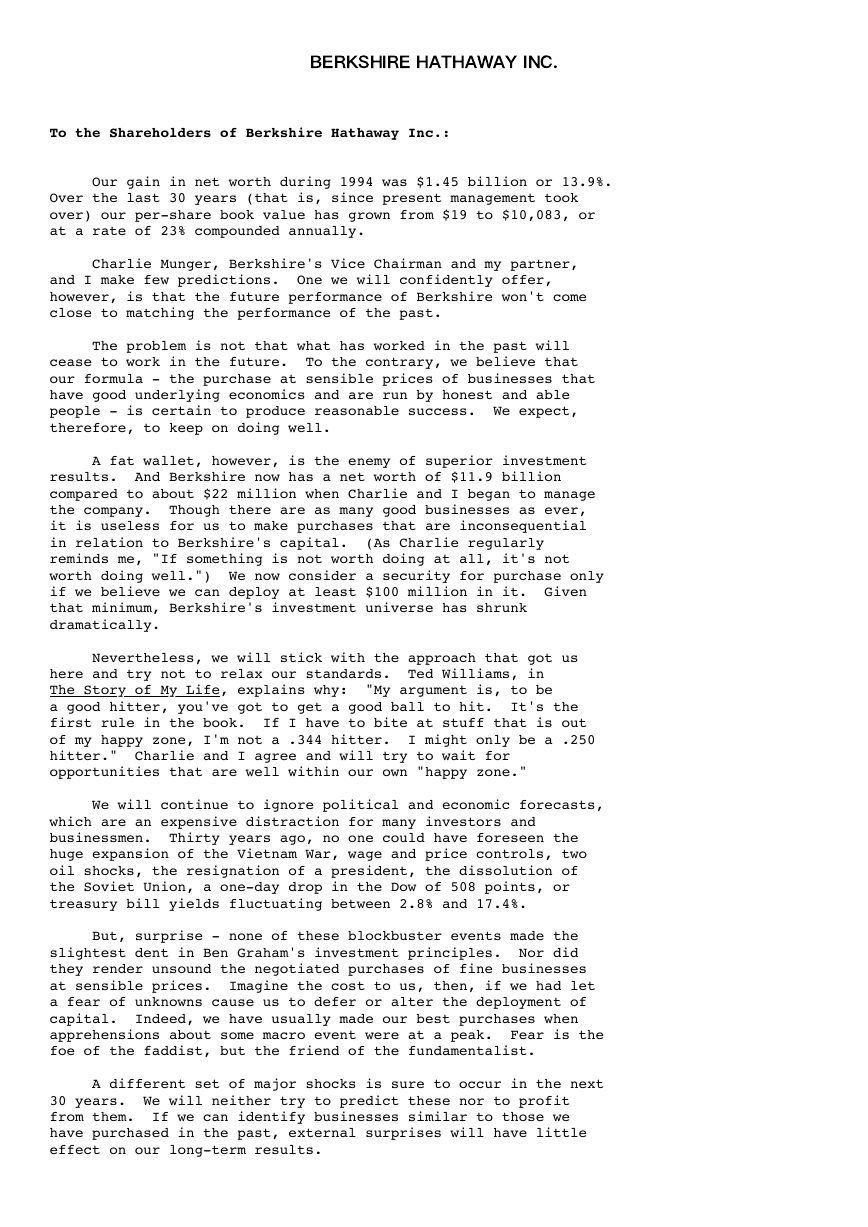
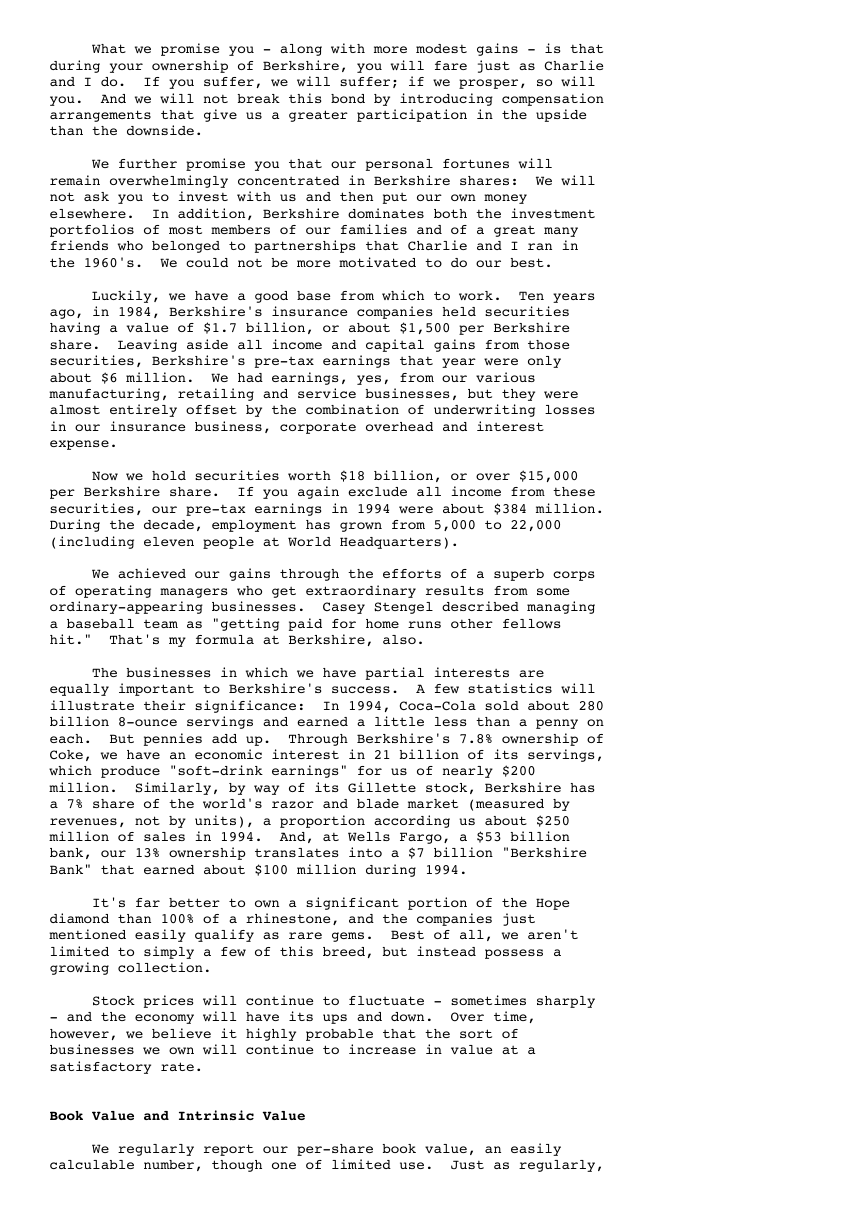
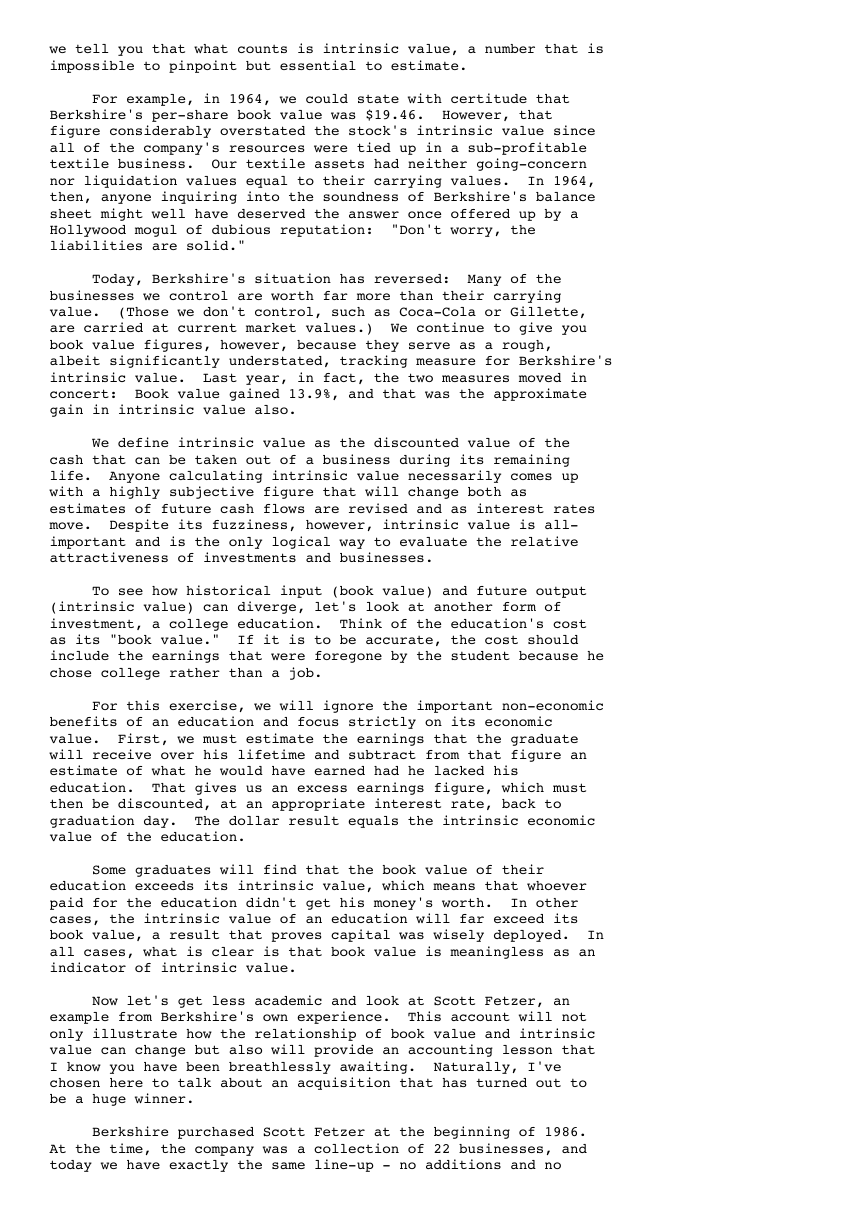
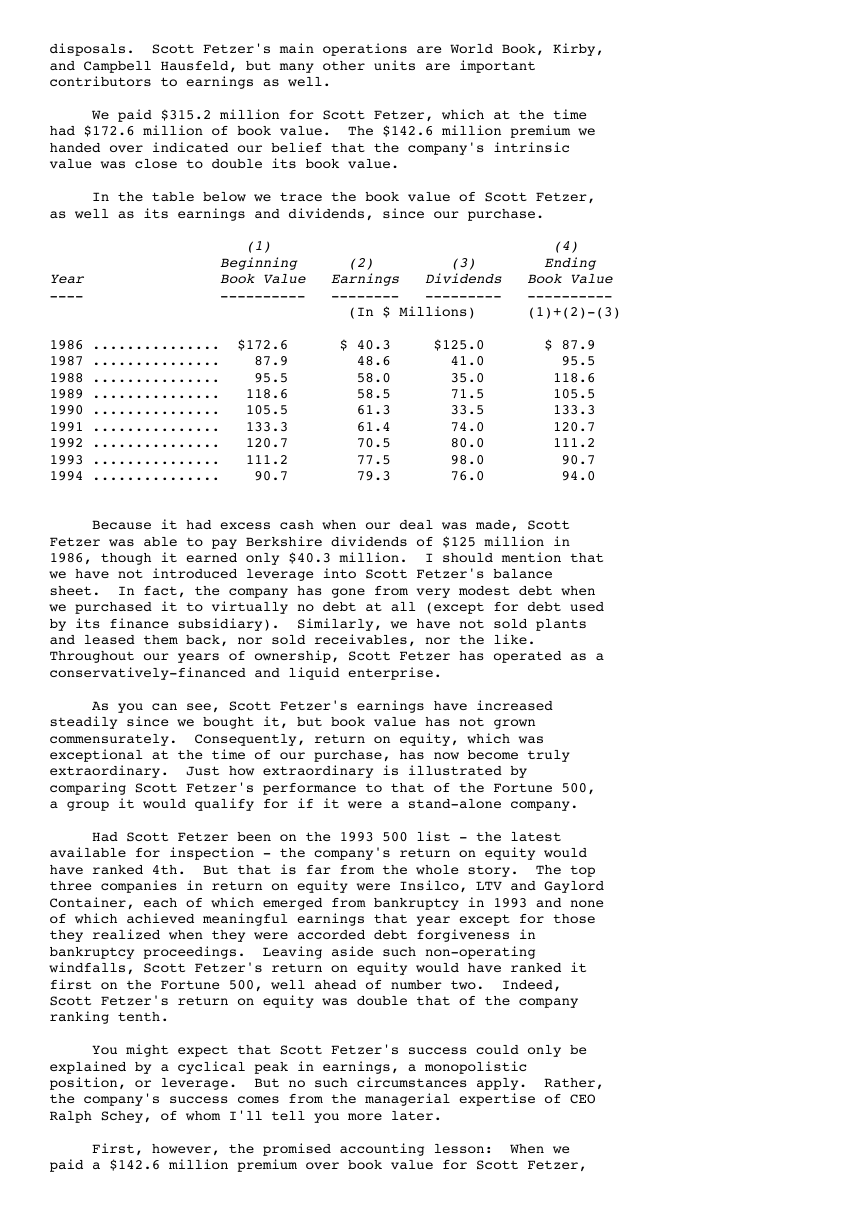
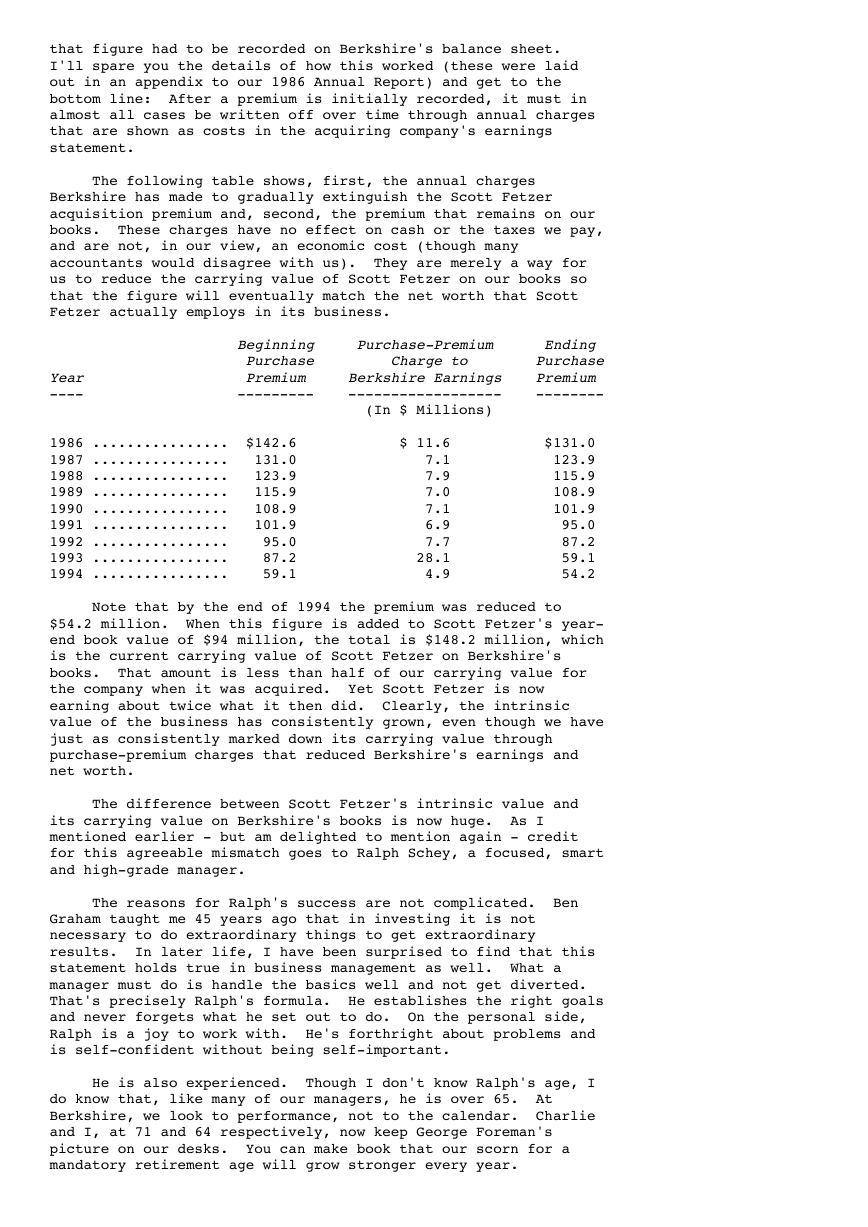
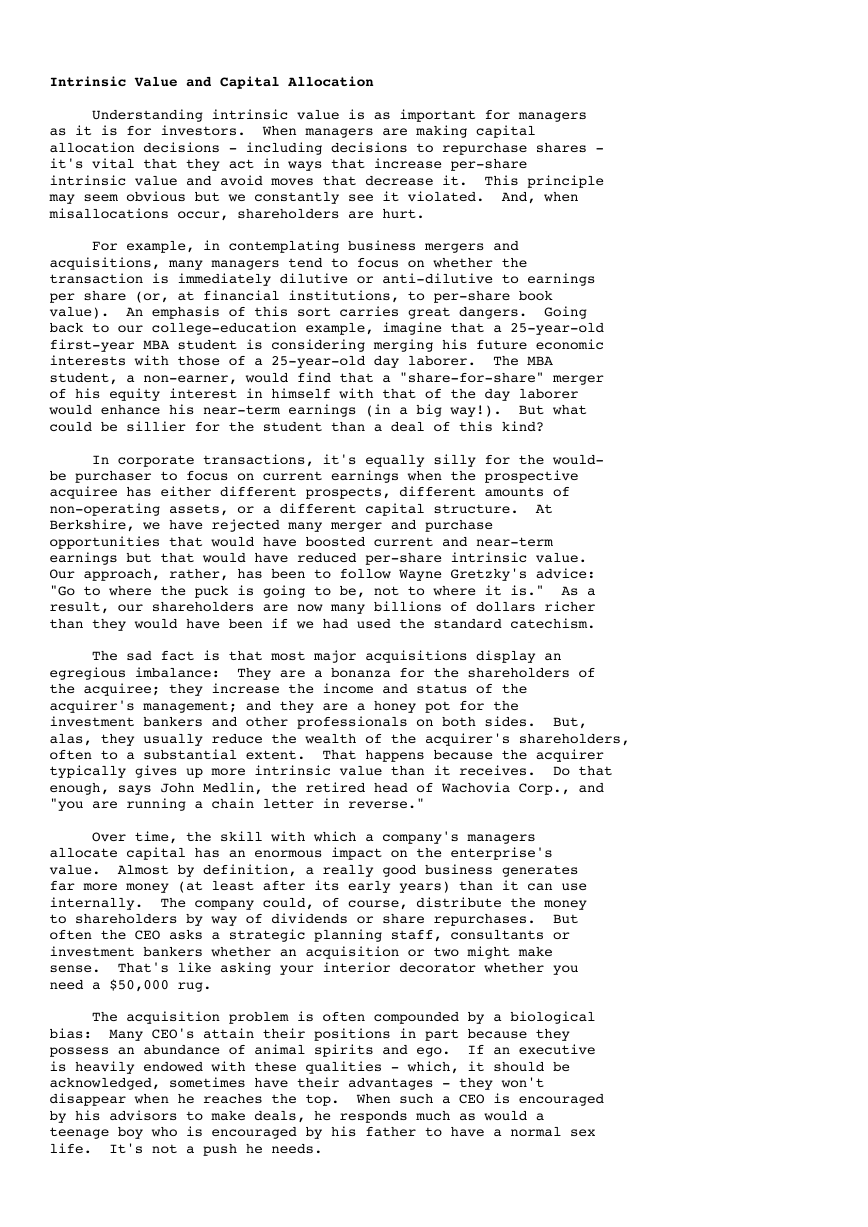
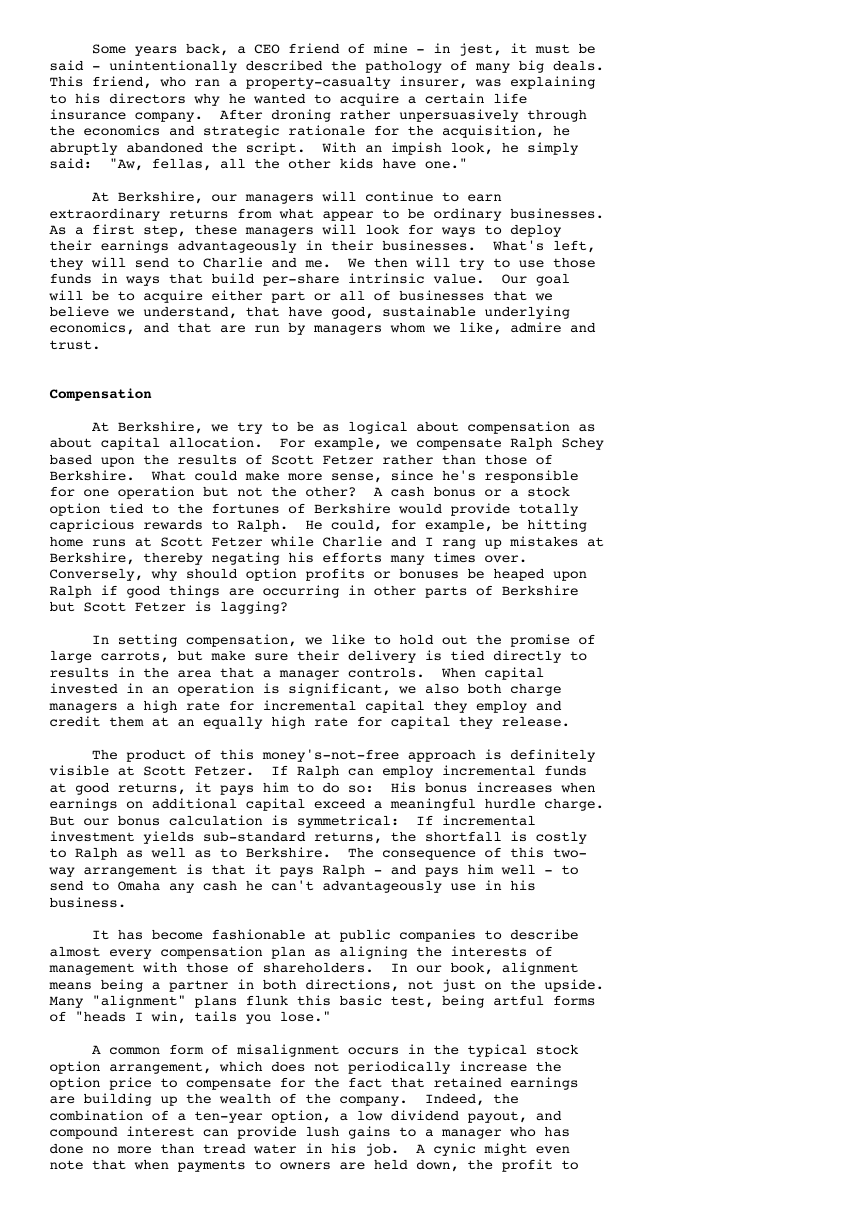
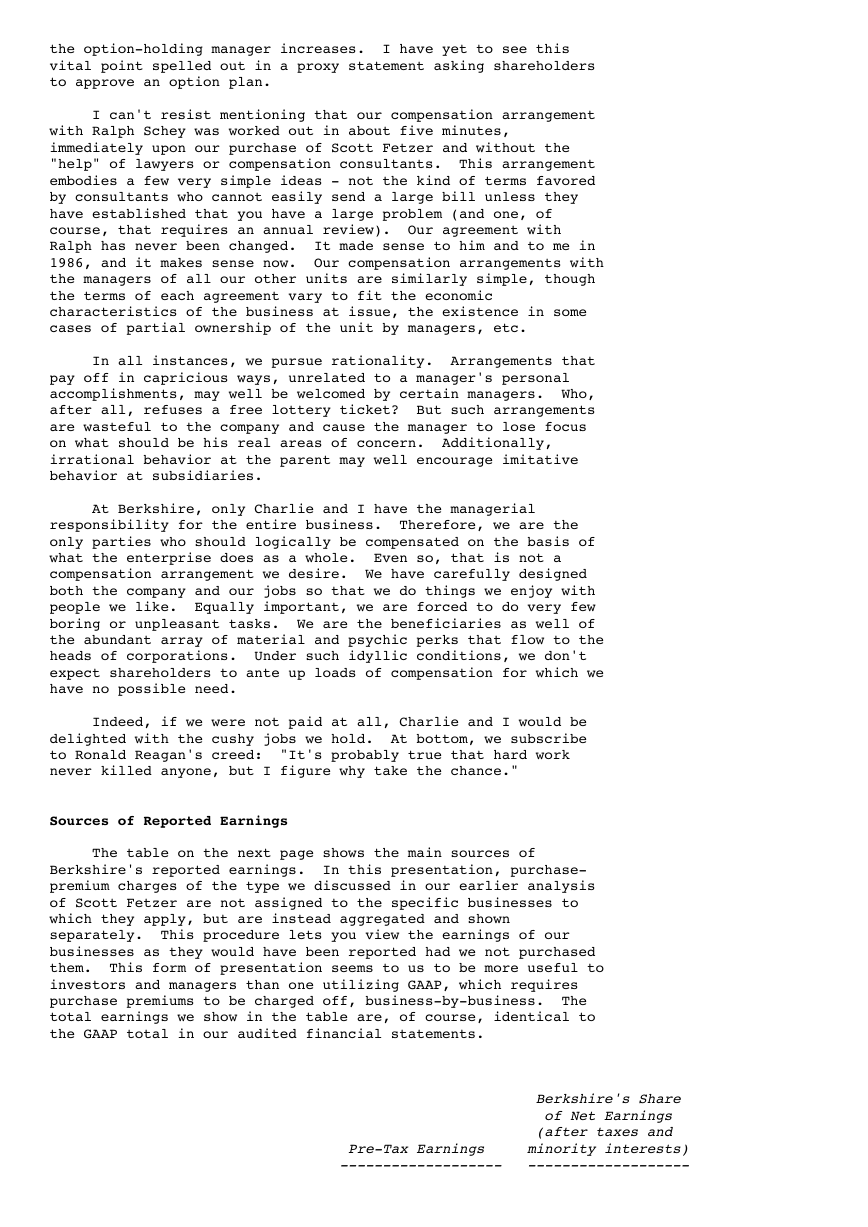








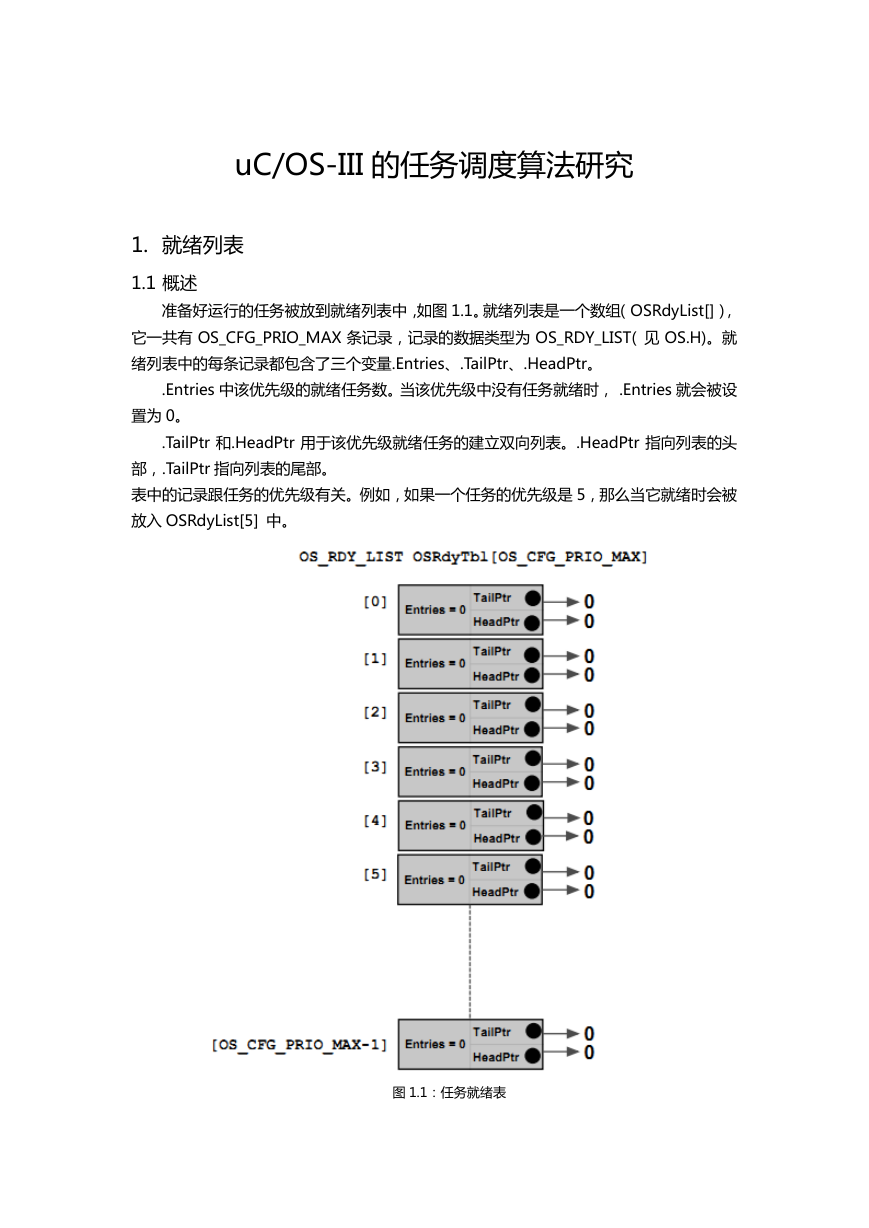 uCOS-III的任务调度算法研究.pdf
uCOS-III的任务调度算法研究.pdf STM32F103x8B_DS_CH_V10(7STM32中文数据手册).pdf
STM32F103x8B_DS_CH_V10(7STM32中文数据手册).pdf FX2N系列PLC培训教程.pdf
FX2N系列PLC培训教程.pdf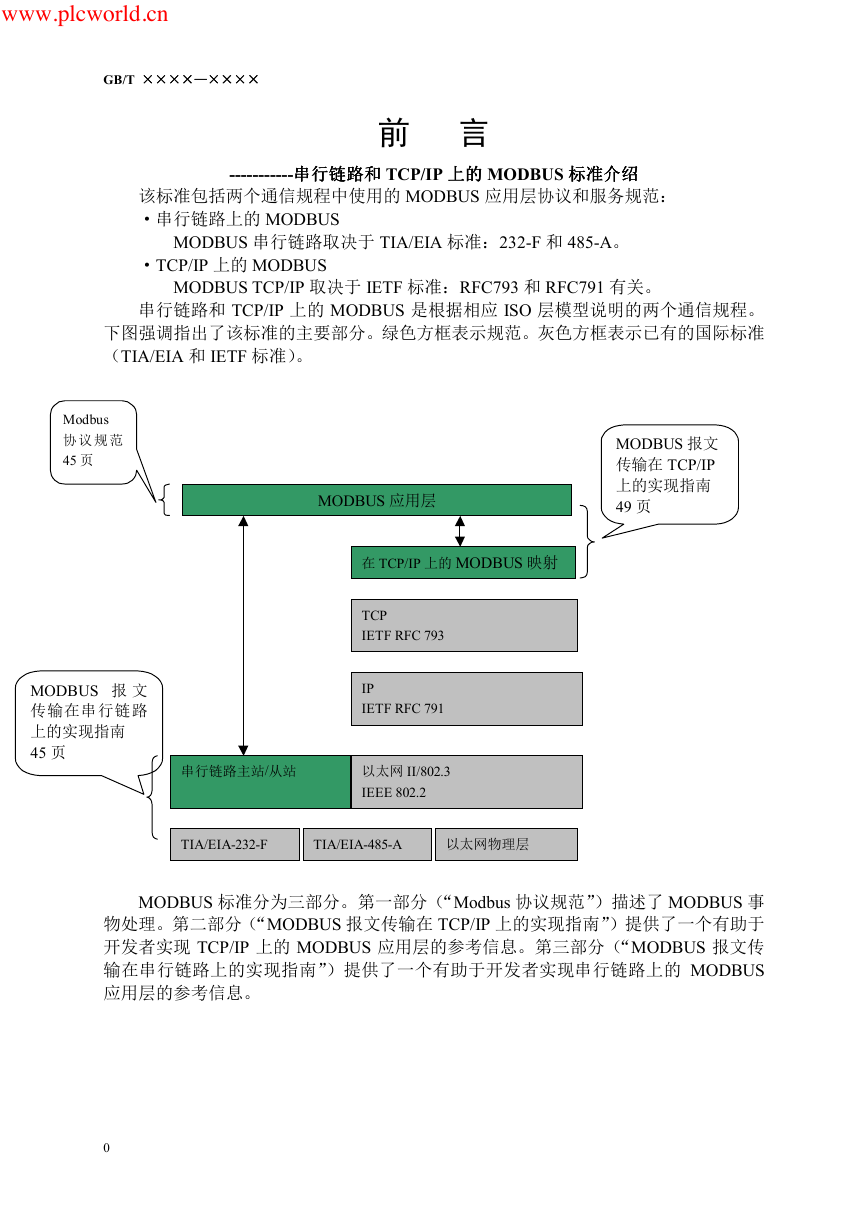 Modbus协议资料.pdf
Modbus协议资料.pdf WM8978中文资料(芯片资料).doc
WM8978中文资料(芯片资料).doc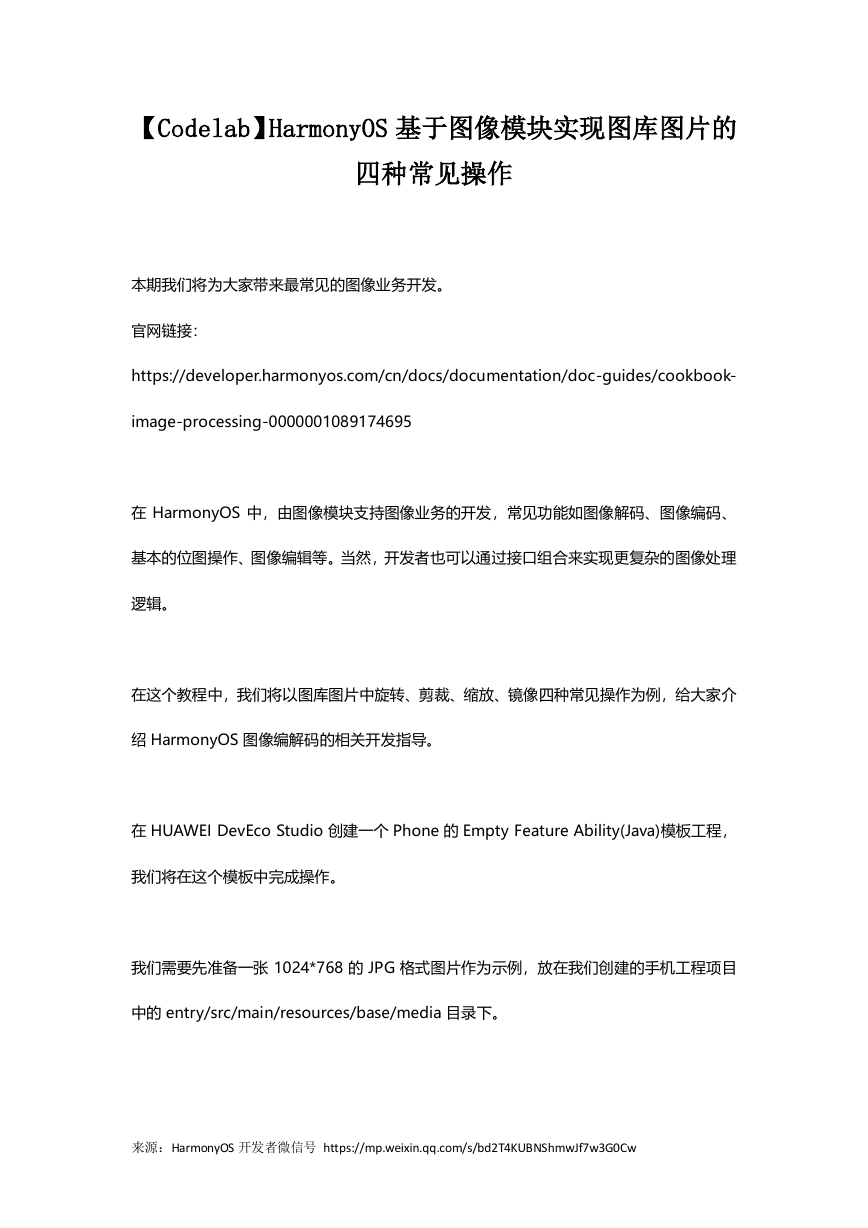 5-1.【Codelab】HarmonyOS基于图像模块实现图库图片的四种常见操作.pdf
5-1.【Codelab】HarmonyOS基于图像模块实现图库图片的四种常见操作.pdf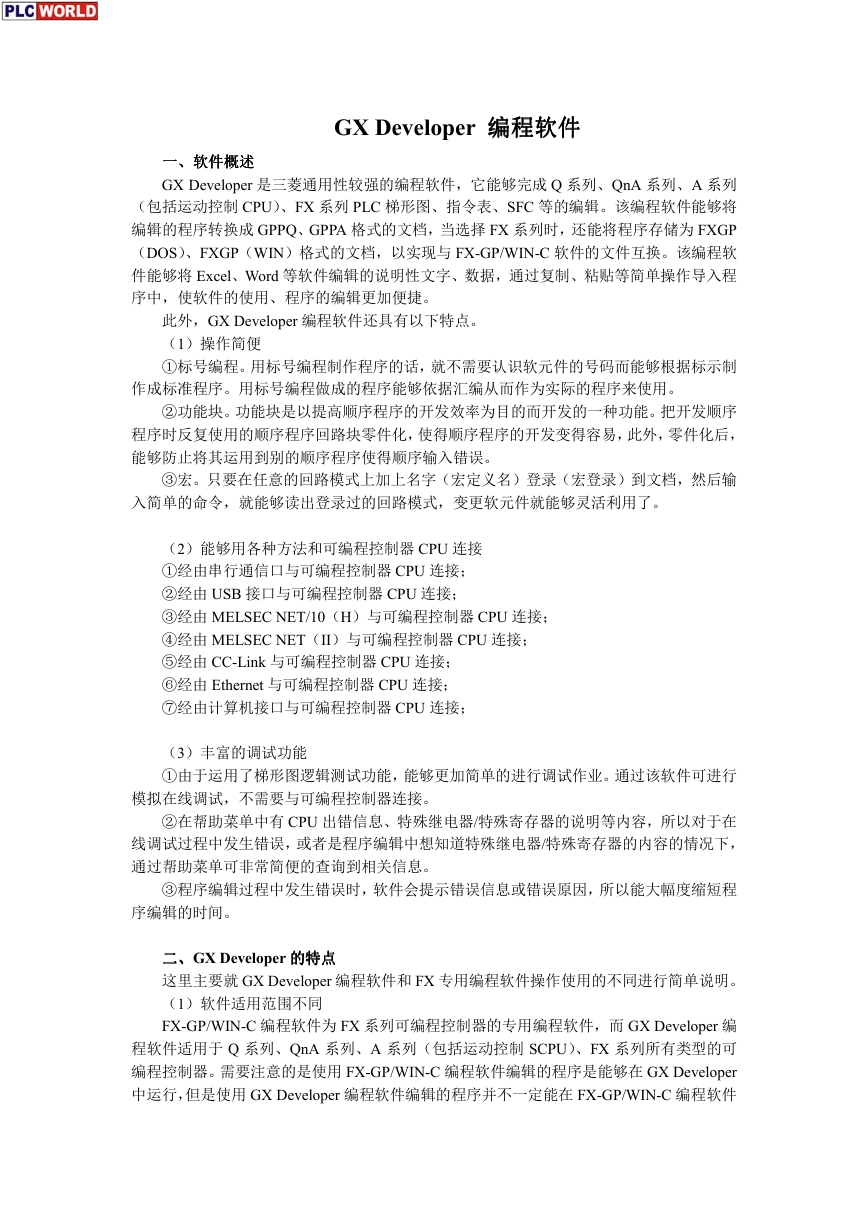 GX Developer 编程软件使用说明.pdf
GX Developer 编程软件使用说明.pdf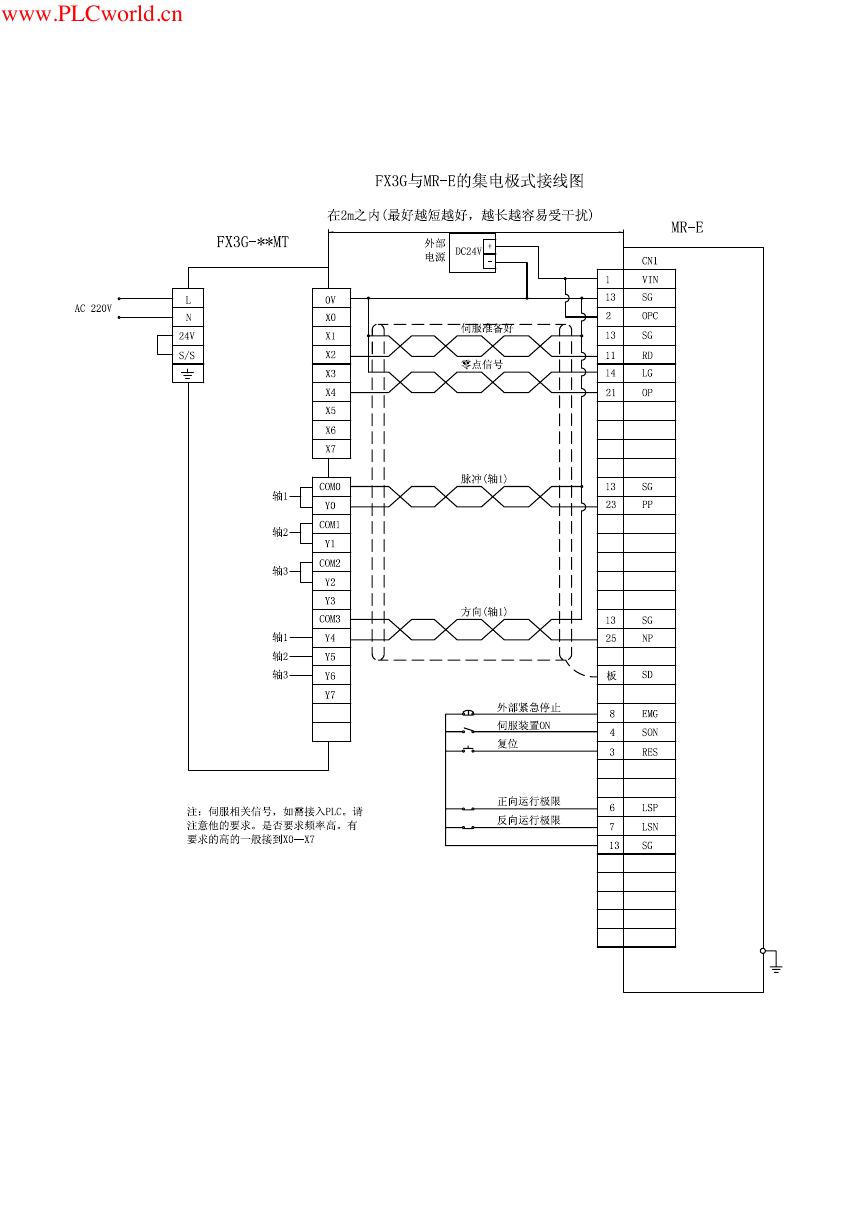 MR-E伺服与FX3G接线图.pdf
MR-E伺服与FX3G接线图.pdf ATK-NEO-6M GPS模块常见问题汇总_201400721.pdf
ATK-NEO-6M GPS模块常见问题汇总_201400721.pdf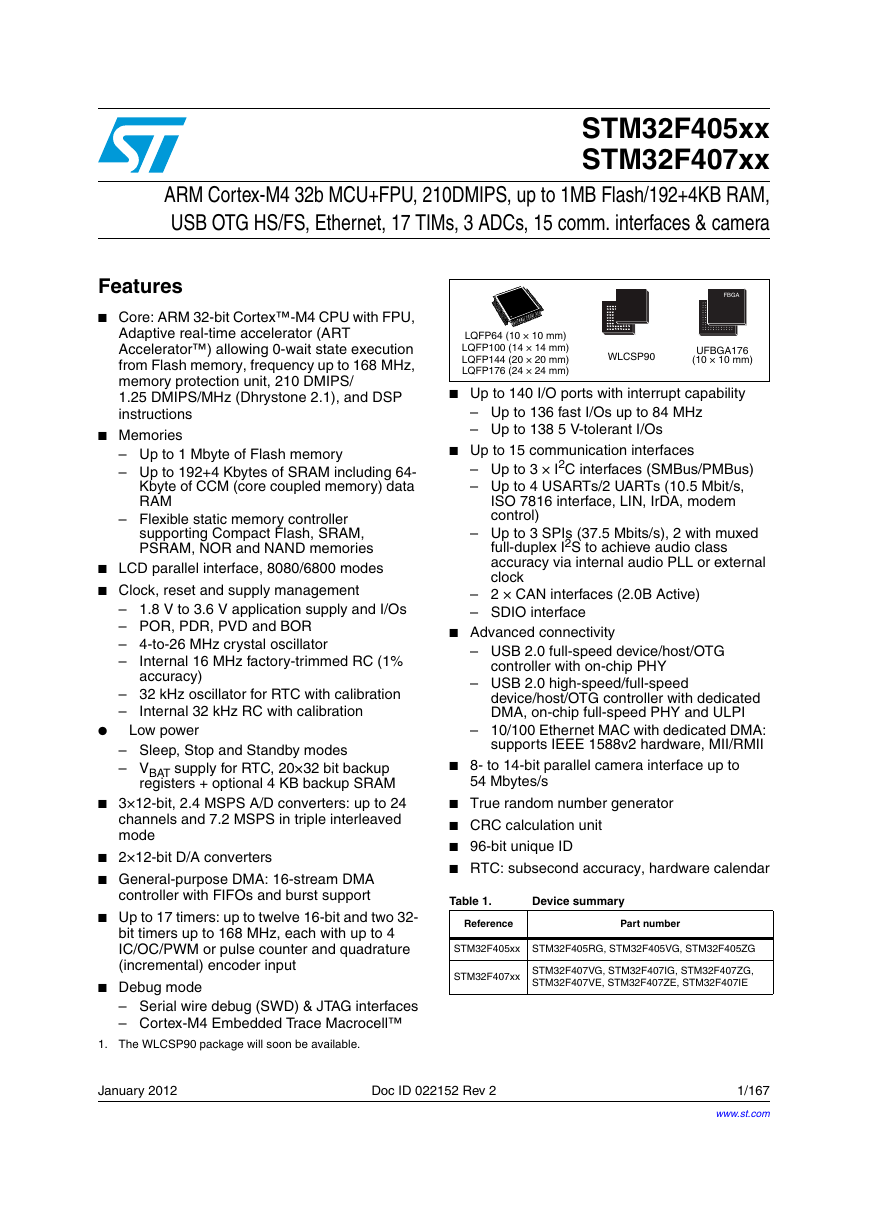 STM32F407ZGT6(芯片资料).pdf
STM32F407ZGT6(芯片资料).pdf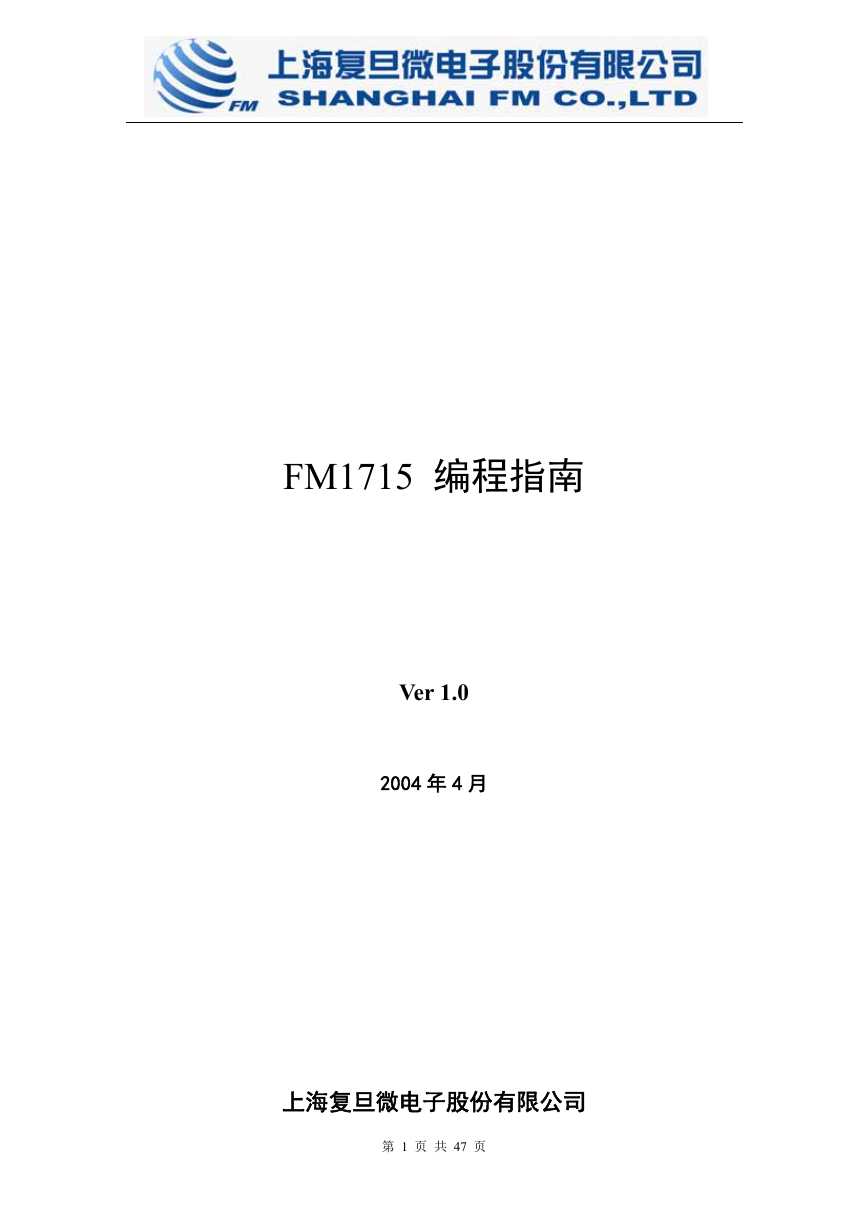 FM1715编程指南.pdf
FM1715编程指南.pdf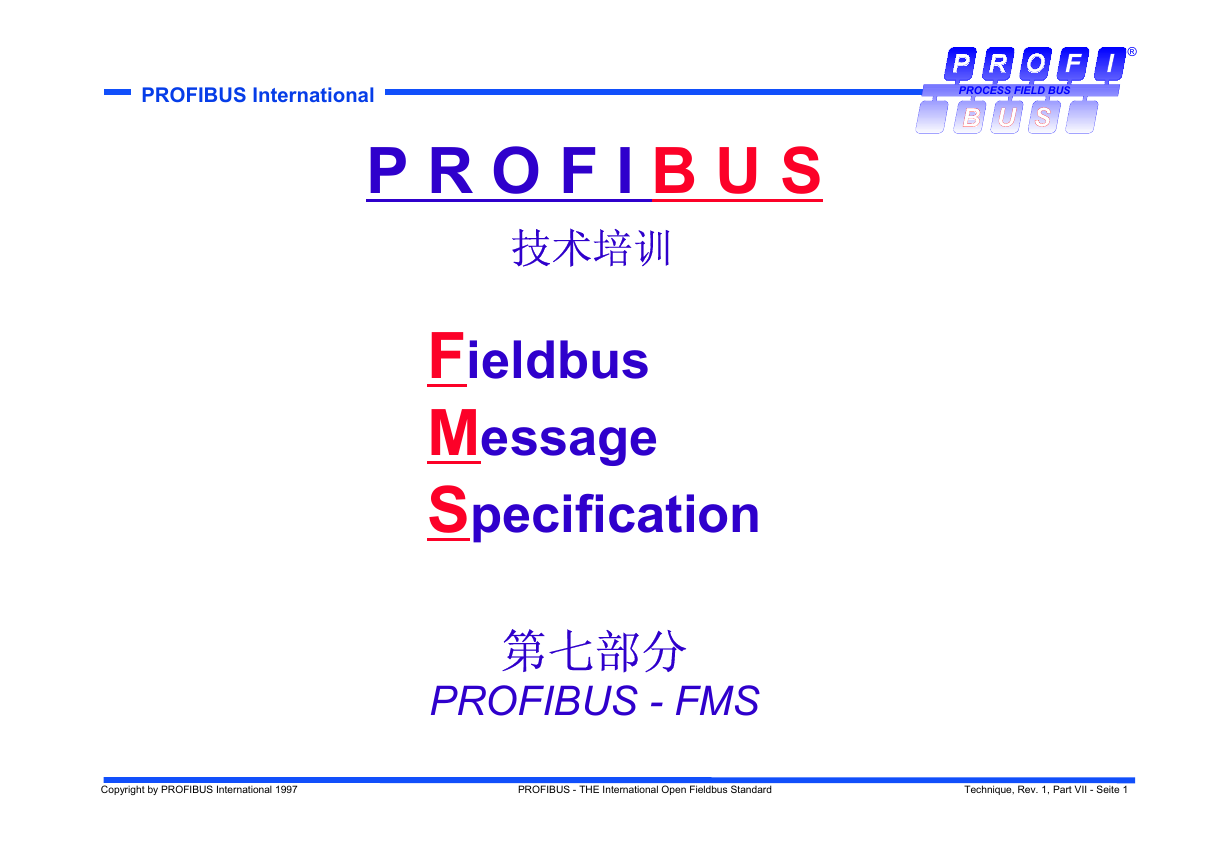 Profibus教程-7.PROFIBUS-FMS.pdf
Profibus教程-7.PROFIBUS-FMS.pdf